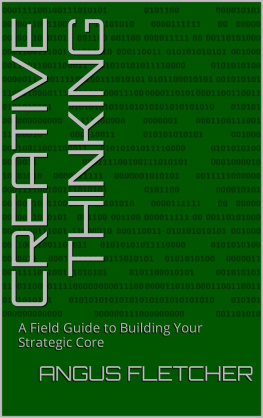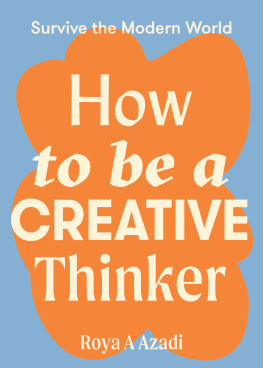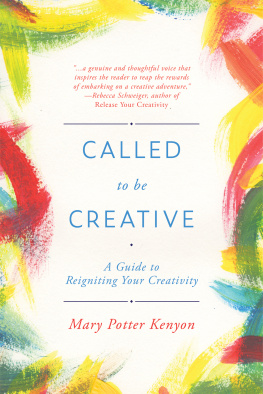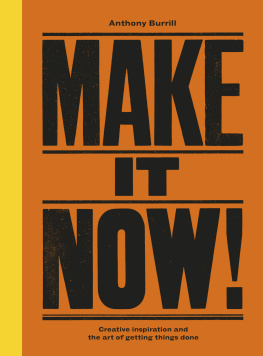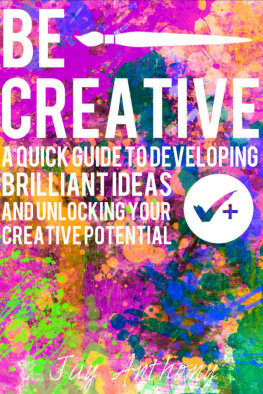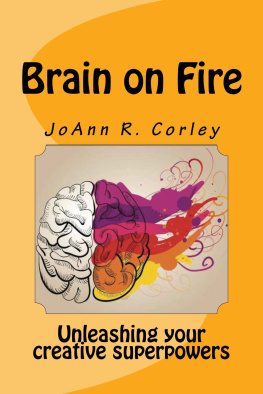Creative Thinking
evolve or die
Creative Thinking:
A Field Guide to Building Your Strategic Core
Dr. Angus Fletcher, PhD
Professor, The Ohio State University
for
US Army
Command & General Staff College
In Memoriam, Colonel Scott Green
ignem non moriatur
the fire never dies
War breaks victorys old rules...
Genius creates the new .
Carl von Clausewitz
Mission Statement
The goal of this Field Guide is to provide you, the US Armys officers and advanced enlisted personnel, with a bootstrap guide that you can use to train yourself to be more creative.
Why be more creative? Because creativity is the human brains power to adapt to fast-changing, life-and-death environments, overcoming emergent challenges and leveraging emergent opportunities. Its what enabled our species to thrive in the chaotic and uncertain ecosystems of evolution by natural selection. It makes us antifragile in situations where computer AI turns brittle, and it will allow you to outcompete and win in volatile, unstable domains.
To make this Guide as user-friendly as possible, it's not written in science-speak or techno-jargon. It's written in stories that have been scientifically-developed to directly activate your brain's deep creative centers. So, you dont need to understand the neuroscience to get all the benefits. Just read the stories and enjoy, trusting the work of your subconscious brain.
The Guide is organized into major sections, of escalating build:
- Section One focuses on developing your emotional desire to be creative, because this desire is the source of innovation.
- Section Two focuses on unlocking your brain's innate creativity by down-powering logic and up-powering narrative cognition (or more colloquially, storythinking.)
- Section Three provides starter techniques (like prioritizing exceptional information) for boosting your natural creativity.
- Section Four provides games and exercises for practicing creativity. Thats because creativity training is like physical training. Creativity is a muscle in your brain that has to be strengthened through regular exercise so that it's strong when you need it. To make training stick, it has to be fun and engaging, prompting you to incorporate it aggressively into your daily routine.
- Section Five provides some more advanced techniques, such as how to translate creativity into innovation.
To incorporate scientific rigor, the Guide contains several sets of definitions along with a formal review of equations at the end. There's also a quick reference in the form of 10 Myths About Creativity, that solidifies the underlying scientific precepts.
This Guide is based on a groundbreaking new science of creativity, pioneered at Ohio States Project Narrative, in conjunction with teams at UPenn Psychology, USCs Brain and Creativity Institute, and UChicagos Polsky Center for Entrepreneurship and Innovation. The new science is rooted in psychology, so its mutually reinforcing with current techniques from sports psychology, etc., for developing resilience. Resilience breeds confidence and optimism, which support creative thinking, which in turn produces positive outcomes that boost confidence and optimism, feeding resilience. The new science of creativity also emphasizes perspective-taking, situational openness, and cooperative teamwork, making it a strong match for anyone who wants to harness individual freedom and diversity in a controlled and disciplined manner for the public good.
This Guide is meant as a Creative Thinking 101. So, like a Biology 101 textbook, it will ground you in the big foundations. But it's only about one-percent of what we know. So, if you have questions or want greater detail, theres plenty more to fill your brain.
CGSC, July 2021
Table of Contents
Definitions
The Simple Dirty
Introduction
Section One: Want It, Get It
Section Two: Unlock Your Creativity
Section Three: Amplify Your Creativity
Section Four: Practice, Practice, Practice
Section Five: Advanced Creativity
Conclusion: Ten Myths About Creativity
Coda: The End of War
Final Review
Acknowledgements
Definitions
Creativity: Plotting original actions.
Tactics: Creativity in response to local threats and
opportunities.
Strategy: Creativity in response to global threats and
opportunities.
Innovation: A tactic or strategy that succeeds.
Compliance: Innovation, institutionalized.
War: The competitive destruction of compliance,
forcing further innovation.
The Simple Dirty
You were born creative.
But to win, you must get more creative.
To get more creative, you must think outside your perspective.
To think outside, you must forget what has worked and seek what can .
To seek what can work, you must dismiss your hopes and fears.
You must embrace the strange, the unexpected, the exceptional.
You must get in the habit of planning fast and re-planning faster.
You must forget about being perfect and strive only to get better.
You must have many minds inside, including your enemys mind.
You must see defeat as a chance to plan again.
And above all, you must have courage.
Courage is trying new things.
Courage is attacking the unknown.
Courage is becoming a different person.
Courage is innovations root.
With it, you will adapt and overcome.
Introduction
Youve just hit the beachhead when you discover: the enemy has been watching. Hes learned all your protocols, your tactics, your secrets. He knows what you know, can think how you think, and is anticipating your every move. What do you do?
- You can overcome this shockand every other shock in combat and beyond. All it takes is creative thinking.
- Creative thinking makes you adaptive, resilient, unpredictable, So that even when youre surprised, youre prepared. Even in chaos, you advance with purpose. Even in calamity, you win.
- To train up your creativity, read this book in order, module by module. Dont rush or skip ahead. Youll gain more by mastering a few modules deeply than by flicking through all the modules superficially.
- Each module contains exercises, and theyre called exercises for a reason: the more you repeat them, the more theyll strengthen you. So, repeat them, over and over, for life.
- Enjoy the training. Theres nothing more gratifying than being creative.
Section One: Want It, Get It
- The first step to doing anything is to want to do it.
- To get strong, you must want to train your body.
- To get disciplined, you must want to drill your mind.
- To get creative, you must want to be creative. And the more you want it, the more youll get it.
- So, this section will deepen your desire to get creative.
- You will learn that creative thinking is the secret to who you are and what makes your life a gift to others.
- You will discover that creative thinking provides the chance to rewrite destiny and wrest triumph from defeat, rising above the challenges of the day to invent a better worldand become your better self.
Module 1: Born to Innovate
You were born to innovate. The proof lies in your ancestors.
Your first ancestor is life. Life emerged 3.5 billion years ago, and it birthed evolution, filling the world with new creations.
Your second ancestor is action. Action evolved 2 billion years ago. At first, action was blind, a propeller-whip that pulsed at random frequencies. But then action learned to respond to feedback, enabling adaptation.
Your third ancestor is thought. Thought evolved 600 million years ago in the neuron, which made possible planning, perspective-taking, and the other tools of imagination.
Next page
